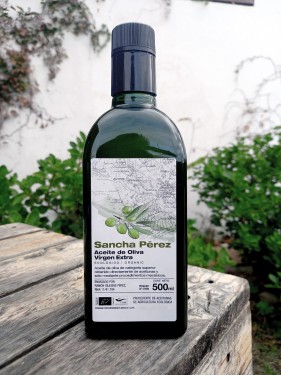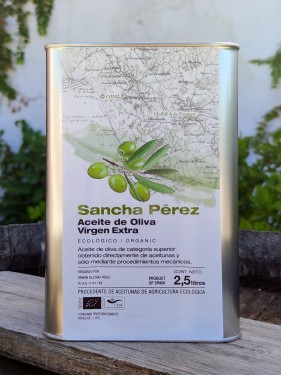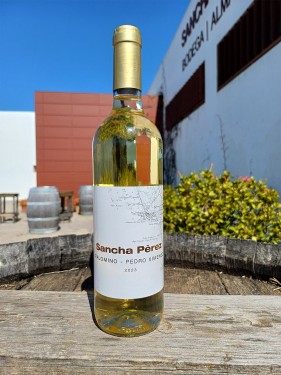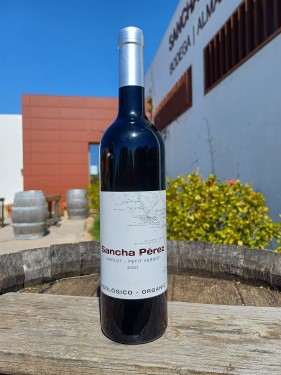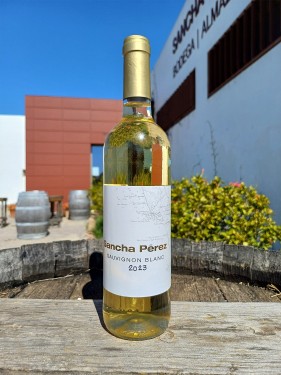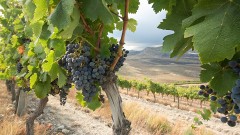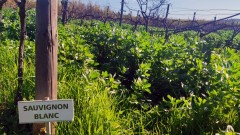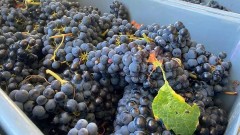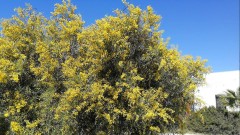
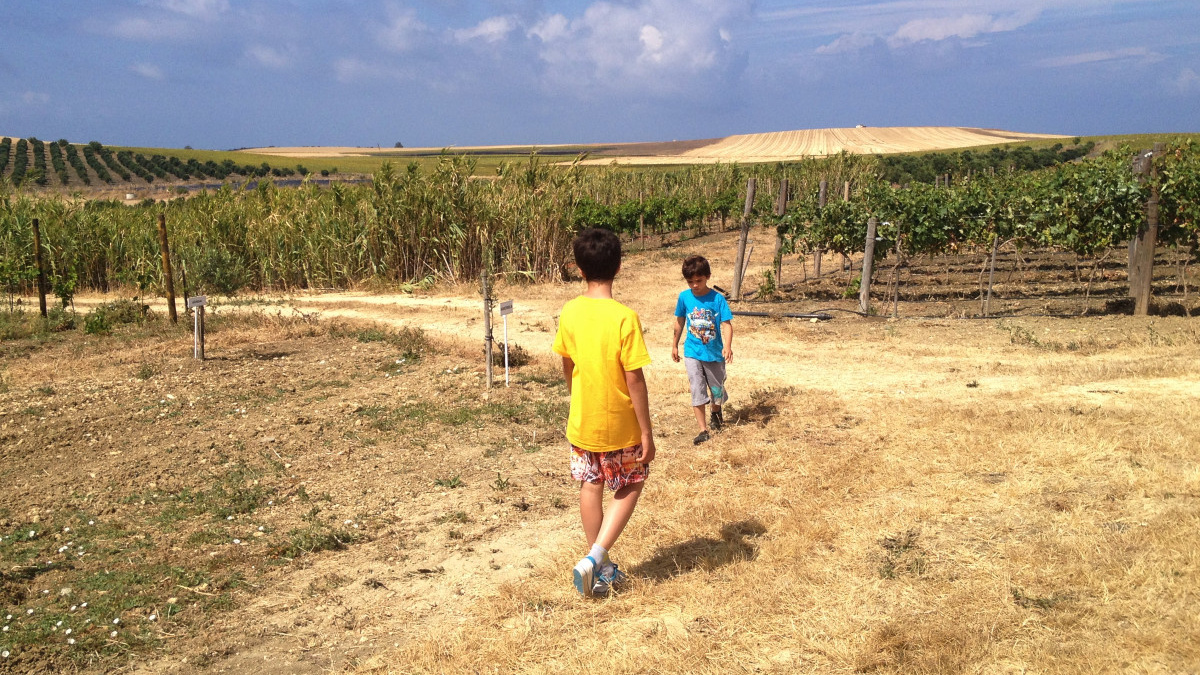
The plan we propose in this article is free and highly recommended for families with children. We did it a few years ago, well before the coronavirus; we were in the province of Cádiz, at the beginning of summer, on our first summer getaway with the little ones... and we were looking for interesting plans...
In the municipality of Vejer de la Frontera, very close to Conil, next to the Río Salado, is the Sancha Pérez estate, a large property owned by a local resident who has transformed it into a winery and olive mill producing organic wine and oil, which can be visited to learn in depth about the production of these products.
Environment of the Sancha Pérez organic winery and olive mill
The Sancha Pérez facilities are small and allow visitors to learn, in a short tour, the processes and tools used to make the high-quality wine and oil which, in the end, can be purchased at a more affordable price than in stores.
We found out about the existence of the Sancha Pérez winery and olive mill at the Conil Tourist Office, through some brochures that announce that "at the Sancha Pérez estate you can discover the secrets of organic farming and taste and purchase our organic virgin olive oils and wines." They warned us that the tasting part was not being done at the time (this was in 2014) because they had a very small production and it was not worthwhile to open bottles for visitors. Well, our main goal was, above all, for the kids to know the estate and understand what a winery is — they had already visited the wineries in the Jerez area — and especially the olive mill. At first, we had to explain the word, of Arabic origin, referring to the pressing of the olive to extract the "juice," the oil.
Olive trees of all kinds
A small path bordered by vineyards, rose bushes, and some cypress trees leads us to the main building, with a small area marked as visitor parking.
Once we arrived at the Sancha Pérez facilities, Ignacio, the estate manager, came out to greet us. He was our guide through the olive mill and winery facilities, explaining every detail of the oil and wine making process with an authenticity and closeness that alone made the visit worthwhile. A man of the land, he knew well the reasons behind each tool, each task, and every care that olive trees and vines require.
Ignacio explained to us that the rose bushes we saw at the entrance, next to the vines, were not decorative but a kind of "pest detectors." Roses are more vulnerable to plant diseases and detect them earlier, so if a rose gets sick, it is a warning that a pest may be arriving that could affect the vines, and necessary remedies are quickly applied to prevent or cure it.
Rose bushes act as 'pest warning signals' in the crops
Next to the parking lot, there were also several small olive trees (the large area occupied by the big ones can be seen in the background, behind the vineyards, closer to the winery), each producing a different variety of olive: Arbequina, Picual, Cornicabra... They already had olives, but Ignacio told us they were not for use; they had left them so visitors could see and appreciate the differences between types, but olives produced by a tree in its first year are not suitable for oil; you have to wait until the next season.
Most of the olive trees on the estate are of the Arbequina variety, although they were starting to introduce other varieties. These formed the basis of the estate, created around 2009. The harvest, in October, is done by hand, with some mechanical help: Ignacio told us that mechanization of the harvest is done with machines that shake the branches to make the olives fall. That, of course, always damages the tree, so they do not use them. The most they use are mechanical comb-like tools that workers bring close to the branches and that, like fingers, help the olives fall faster than by hand. A help, he says, but with maximum respect for the olive tree.
The harvested olives are cold-pressed and that oil is bottled and sold on site, with some small distribution to shops and restaurants. The residual product —the pressed olives— is sold, because with previous heating more oil can be extracted, but they do not do this; Sancha Pérez oil is only virgin olive oil, produced solely by cold pressing.
High-quality organic wine
The winery-olive mill visit is guided by the company staff.
The vineyards arrived a little after the olive trees, but they are the soul of Sancha Pérez. From their grapes, a high-quality organic wine is made, just like the oil, with Merlot and Petit Verdot varieties. About 6,000 liters of wine are produced per year, although production is gradually increasing. The grapes are hand-picked and selected, after care and attention directed by the estate's enologist, with no use of chemical fertilizers or herbicides, because, as Ignacio pointed out, "all of that is very controlled and there are many inspections to ensure that we do things as we should."
On one side of the estate, in the area visible from the main building, a whole section of reed bed caught our attention, but everything has an explanation: "It is to stop the Levante wind; here, when the wind blows, it takes everything and ruins everything, so the reeds act as a natural wall, and the wind does not hit so hard..."
Although there was no final tasting —although we did do an oil tasting, because Ignacio gave us a "sip" on a little plate, and we dipped a finger and licked it trying to identify olive types, aromas...— we decided to buy a couple of bottles of wine (€13 each) and some oil, which was available in three formats: 250 ml bottle for €3, half a liter for €6, and a 2.5-liter can for €18 (when we visited, a few years ago). There was a more expensive wine (€20 a bottle) focused solely on the Petit Verdot grape variety, but following Ignacio's advice, we decided to try the blend with Merlot.
Organic wine and oil are produced in these facilities
What they liked most was the outdoors, with all the types of olive trees, the story of the rose bushes as disease detectors, and, above all... Ignacio's two little dogs that danced around our feet the whole time!
The next day, at breakfast, when we ate bread with Sancha Pérez estate oil, they remembered more things and better understood the visit.
How to get to the Sancha Pérez estate
The access is not easy to find, even following the directions in the brochure. You have to go from Conil to one of the southern exits, towards the road to El Palmar and Caños de Meca. You will leave the water treatment plant on your right, and just after crossing the bridge over the Río Salado, to the left, there is a path with a sign indicating "Finca Sancha Pérez." Take it and follow this path, almost parallel to the river for about two kilometers, at the end of which you will reach a typical entrance with the estate's name and a sign stating that organic oil and wine are produced:
Visiting hours of the Sancha Pérez estate
From June 15 to September 15, Monday to Saturday from 10 a.m. to 3 p.m. Afternoons and Sundays by appointment only.
Rest of the year: Monday to Friday from 10 a.m. to 3 p.m. Afternoons, Saturdays, and Sundays by appointment only.
Contact phone: 670 68 68 49 and 619 11 31 62.
Website: www.sanchaperez.com.

